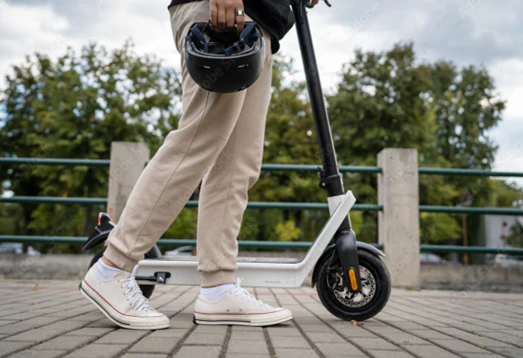In recent years, electric scooters have surged in popularity, transforming the way we navigate our cities. These eco-friendly vehicles offer a convenient, efficient, reparatie fatbike and fun alternative to traditional forms of transportation, such as cars and public transit. This article delves into the evolution of electric scooters, their benefits, challenges, and their role in the future of urban mobility.
A Brief History
The concept of the electric scooter dates back to the early 20th century, with early models appearing in the 1910s. However, it wasn’t until the early 2000s that advancements in battery technology made electric scooters more viable for widespread use. The introduction of lithium-ion batteries greatly improved the range and performance of electric scooters, allowing for longer rides and shorter charging times.
The modern electric scooter boom began around 2017 when companies like Bird and Lime introduced dockless scooter-sharing programs in urban areas. This innovation allowed users to rent scooters via smartphone apps, making them easily accessible. The convenience of electric scooters quickly caught on, with cities across the globe embracing them as a viable transportation option.
Benefits of Electric Scooters
- Eco-Friendly Transportation: Electric scooters produce zero emissions, making them an environmentally friendly option for urban transportation. By reducing the reliance on fossil fuels and traditional vehicles, electric scooters contribute to cleaner air and a reduction in greenhouse gas emissions.
- Traffic Alleviation: With the increasing congestion in urban areas, electric scooters provide a practical solution to traffic woes. They require less road space than cars and can navigate through crowded streets more efficiently, helping to reduce overall traffic congestion.
- Cost-Effective: Compared to owning and maintaining a car, electric scooters are significantly more cost-effective. Users can save money on fuel, parking, and maintenance, making them an attractive option for commuters.
- Health Benefits: While riding an electric scooter is less physically demanding than cycling or walking, it still encourages an active lifestyle. Users can engage in short bursts of physical activity, promoting overall health and well-being.
- Convenience and Flexibility: Electric scooters are lightweight, portable, and can be easily parked. They provide users with the flexibility to complete short trips without the hassle of public transportation schedules or the need for a personal vehicle.
Challenges Ahead
Despite their many advantages, electric scooters also face several challenges:
- Safety Concerns: The rise of electric scooters has raised safety concerns, with incidents of accidents and injuries reported. Inexperienced riders may struggle with navigating traffic, and pedestrian safety has also become a concern, especially in crowded areas.
- Regulation and Infrastructure: Many cities are still figuring out how to regulate electric scooters effectively. Issues such as parking, speed limits, and designated lanes need to be addressed to ensure safety and smooth integration into existing transportation systems.
- Sustainability of Scooter Sharing: While scooter-sharing programs are convenient, questions arise about their sustainability. The environmental impact of manufacturing and disposing of scooters, along with the energy used for charging, must be considered to ensure they remain an eco-friendly option.
- Battery Disposal and Recycling: As with any battery-operated device, the disposal and recycling of electric scooter batteries present a challenge. Ensuring that batteries are recycled properly is essential for minimizing environmental impact.
The Future of Electric Scooters
The future of electric scooters looks promising. As cities continue to evolve, integrating electric scooters into urban transportation plans could enhance mobility options. Innovations such as improved battery technology, autonomous scooters, and enhanced safety features are on the horizon.
Additionally, urban planners are recognizing the need for dedicated scooter lanes and parking spaces, making it safer and more convenient for users. The potential for electric scooters to complement public transit systems is also significant, offering a first-and-last-mile solution for commuters.
Conclusion
Electric scooters are revolutionizing urban mobility, providing a practical, eco-friendly alternative to traditional transportation methods. While challenges remain, the benefits they offer make them a compelling solution to modern urban issues such as traffic congestion and pollution. As cities adapt to the growing popularity of electric scooters, they are likely to become a permanent fixture in our urban landscapes, paving the way for a greener, more efficient future.

